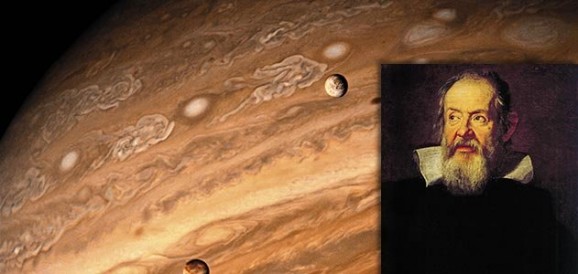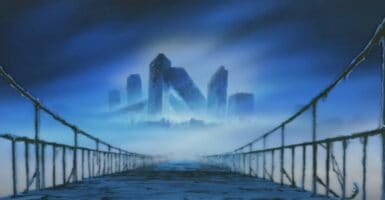Today In 1633 Galileo Was Deemed A Heretic
This article is more than 2 years old
 Copernicus wasn’t the first person to theorize that the Earth revolved around the sun, but he was the first person to publish support for the theory that anyone paid attention to. In 1543, he published De revolutionibus orbium coelestium libri VI (“Six Books Concerning the Revolutions of the Heavenly Orbs”), which asserted the idea Philolaus and Hicetas, Greek philosophers stargazing in about 500 BC, first posited: that the Earth is round, and that it revolved around a “central fire” that holds the universe together. Even though the heliocentric model of the universe was first conceived long, long ago, it wasn’t until Galileo came along in the 1600s and proved it that people’s views began to shift. Of course, Galileo paid a price for his work: 381 years ago today, the Vatican declared him a heretic.
Copernicus wasn’t the first person to theorize that the Earth revolved around the sun, but he was the first person to publish support for the theory that anyone paid attention to. In 1543, he published De revolutionibus orbium coelestium libri VI (“Six Books Concerning the Revolutions of the Heavenly Orbs”), which asserted the idea Philolaus and Hicetas, Greek philosophers stargazing in about 500 BC, first posited: that the Earth is round, and that it revolved around a “central fire” that holds the universe together. Even though the heliocentric model of the universe was first conceived long, long ago, it wasn’t until Galileo came along in the 1600s and proved it that people’s views began to shift. Of course, Galileo paid a price for his work: 381 years ago today, the Vatican declared him a heretic.
The heliocentric model had a few sticking points: that the earth wasn’t the center of the universe, of course, but also that the positions of the stars seemed never to change, regardless of Earth’s supposed orbit around the sun. It was in response to that second item that Claudius Ptolemy theorized that if Earth were fixed, and everything else revolved around it, then that would explain why the stars never moved. This made sense to folks, so the geocentric theory reigned for almost 1,500 years.
It would take a lot of evidence to disprove that theory, but Galileo was up to the task. The Italian became obsessed with math and Aristotelian philosophy, and soon became interested in motion and gravity. In one of his more noteworthy experiments, he dropped objects off the Leaning Tower of Pisa and proved that the velocity of an object’s fall is not determined by weight. But that was in direct contradiction to Aristotle’s work on motion, and thus made others skeptical of Galileo’s work. Eventually, he got the boot from the University of Pisa’s Department of Mathematics.
Galileo kept plugging away, contradicting more of Aristotle’s laws of physics, inventing a compass, and doing a bunch of other math-y things. It wasn’t until he heard about a crazy new invention called the telescope in 1609 that he became obsessed with astronomy. He started making his own lenses and telescopes, using them to make the observations that we all know him for.
He charted the phases of the moon, as well as the satellite’s rough surface. In 1610, he discovered Io, Europa, Ganymede, and Callisto revolving around Jupiter. He found evidence of something weird surrounding Saturn and confirmed that there were way, way more stars than anyone previously thought. Perhaps his most pivotal discovery was that Venus goes through phrases, much like the moon, proving that it too revolves around another body, as does Mercury.
Galileo’s conversion to Copernicanism started to irk the Church, especially when a letter he wrote to a student about reconciling heliocentricism with the Bible caught their attention. He was admonished “not to hold, teach, or defend” the Copernican theory “in any way whatever.” That was a bit of a setback, but Galileo was able to enter the debate from another angle: studying comets. Eventually, he received permission from the Pope to write a book called Dialogue Concerning the Two Chief World Systems, Ptolemaic & Copernican, which is what resulted in the inquisition and his sentence of life in prison.
I didn’t know this until researching this post, but Galileo’s imprisonment was actually pretty cushy by most prison standards. There were no jails or dungeons involved. He stayed for a while at the Tuscan ambassador to the Vatican’s house, moved to an apartment, and then a palace in Siena. In the end, he wound up in a villa on the hills above Florence, where he spent the rest of his life.











